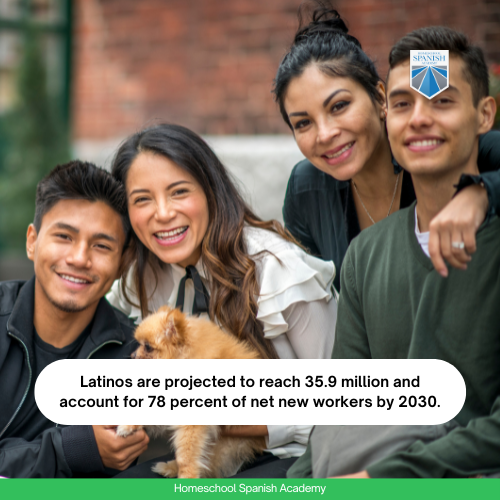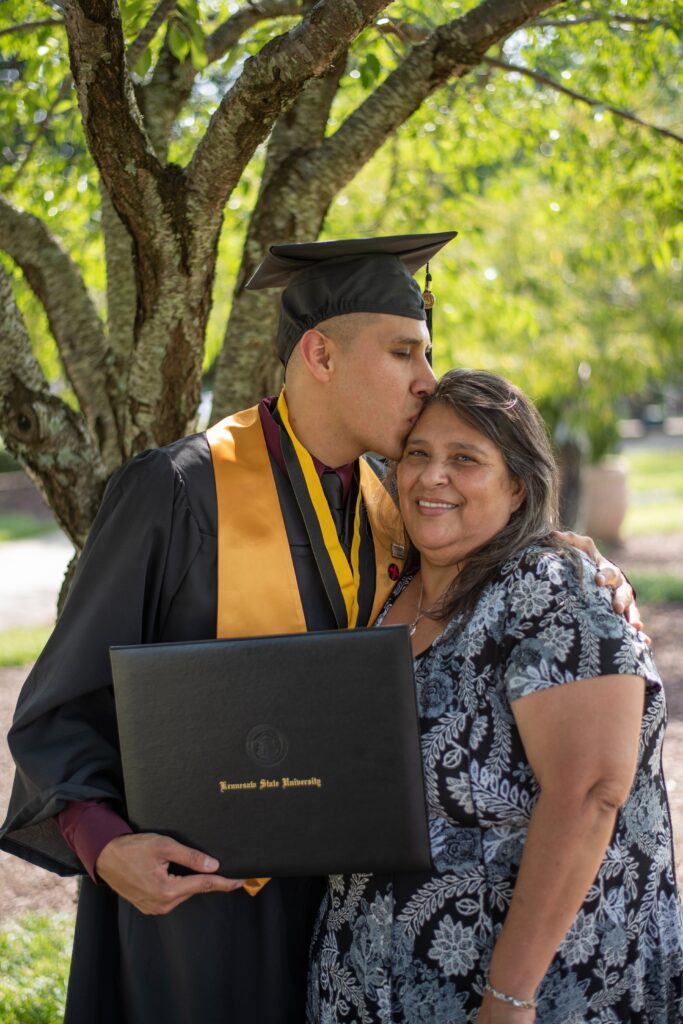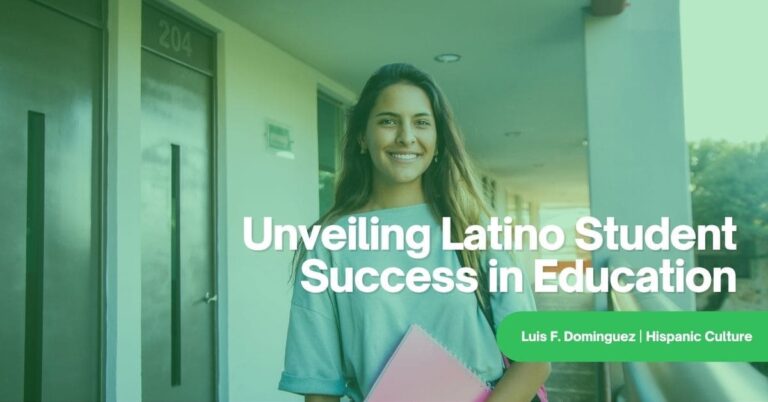Defining what Latino student success means isn’t as simple as it may sound.
It involves a lot of different variables and depends on the circumstances of each specific case.
However, “a principal measure of Latino student success should be the completion of a baccalaureate degree,” which for Latino students is a complicated issue for many reasons.
Hispanics are one of the less educated ethnic groups and face more barriers and challenges in their education than most other students.
This doesn’t mean that achieving Latino student success isn’t possible; it is just that it will require a collective effort from families, schools, and communities.
Keep reading to learn more about the importance of Latino student success.
What are the main challenges that Latino students face, and what are the roles of families and schools in the education of Latinos?
In this article, you will also learn which successful strategies have already been implemented to help Latino students.
Join 559 million people on the planet who speak Spanish!
Sign up for your free trial Spanish class today. 


The Importance of Latino Student Success
Increasing Latino student success is critical as “just 17.8 percent of Latino adults, ages 25-34, hold a bachelor’s degree compared to 43.7 percent of young, white adults.”
Also, “bachelor’s degree holders earn, on average, nearly $25,000 more annually than non-degree holders.”
Holding a degree also reduces the odds of unemployment and increases the probabilities of voting and volunteering.
On the other hand, Latino student success doesn’t end at graduation.
Latinos “are projected to reach 35.9 million and account for 78 percent of net new workers by 2030.”
Also, by the end of the decade, “Latinos will represent 20 percent of the nation’s workforce.”
Talking about Latino power!
These statistics highlight the importance of developing strategies that promote Latino student success.
The question might be, how to do it?

The Barriers and Challenges Faced by Latino Students
Latinos “make up 18 percent of the US population but just 8.5 percent of students at selective institutions” (where completion of their degrees is more likely).
You can understand the urgent need for selective colleges and universities to enroll more Latino students.
Their failure to do so is one of the main challenges faced by Latino students.
Another important barrier to Latino student success is graduation rates.
White students who start college as full-time first-year students in four-year institutions earn bachelor’s degrees at a rate of 63.3 percent.
On the other hand, the Latino college graduation rate is just 53.6 percent.
This ten percent gap is one of the main challenges to Latino student success, and one colleges and universities need to pay more attention to.
Hispanic education statistics show Latinos are “among the least educated group in the United States.” For instance, “one-fourth of Hispanic adults have less than a ninth-grade education.”
Latino students face other important challenges like language barriers, discrimination, and poverty.
The Role of Families and Schools in Latino Education
Families
If you know anything about Latinos, then you know that “family plays a central role” in their lives, meaning they also play a crucial role in Latino student success.
Sadly, statistics show that “Hispanic children aged 3 to 5 are less likely to read than non-Hispanic children,” indicating later school success.
Also, due to limited social, educational, and economic resources, “Hispanic families are less likely than other groups to participate in literacy activities.”
These data don’t indicate that Hispanic families are holding back their children, but to identify the source of some of the challenges Latino students face from an early age.
This quote from Dr. Frances Contreras of the University of Washington can better summarize the role of Hispanic families in their children’s education:
“Latino parents are like other parents in this country—they want the best for their children. However, many Latino parents, especially newer immigrants, don’t always know how to participate in our school system.”
Schools
Schools are responsible for increasing Latino student success, and they’re trying to do their part.
However, there are still many challenges for Hispanic students starting with language barriers and a lack of school staff to address this essential issue.
A revealing statistic shows that “Latinos comprise 28% of K-12 students, but only 9% of teachers are Latino.”
This is an important opportunity for schools that needs to be balanced, as many Latino students face teacher bias and stereotyping.
Access to well-funded schools is another challenge that needs to be addressed, as Latino students are “more likely to attend a low-rated school than their non-Latino white peers.”
Practical Strategies and Initiatives that Promote Latino Student Success
Although there’s still a long way to go to increase Latino student success, some colleges and other institutions are already working towards that goal.
Here are some effective strategies that have been applied:
The University of South Florida
The USF implemented a series of student success initiatives in 2009, including support programs, policy changes, and student data analysis to identify and help students in danger of dropping out.
As a result, the Latino college graduation rate in 2015 rose to 66.2 percent, “exceeding the national average by 13 percent.”
Latino students also improved by 3 points in their achievement gap in 2017-2018, and the USF closed their “graduation rate gap by race, ethnicity, and socioeconomic status.”
Math and STEM Focus
At Florida International University, 66 percent of the students are Hispanic, so they chose to focus their efforts on improving their students’ Math and STEM performance.
To achieve that, the university created the Mastery Math Lab, “designed to improve student performance in individual math courses.” They also set up the STEM Transformation Institute, which helps students to earn STEM degrees.
As a result, Florida International University “graduates the highest number of Hispanics in STEM across the country.”
Partnerships with Community-Based Organizations
Austin Community College (ACC) implemented strategies to impact Latino student success.
The most successful one is establishing partnerships with community-based organizations such as Austin College Access Network, Communities in School, and Hispanic Scholarship Consortium, among others.
These partnerships support Latino students from high school to ACC and after graduation.
Together with other strategies, these partnerships have resulted in ACC earning the Seal of Excellence, a certification provided by Excelencia in Education that focuses on “using data, evidence-based practices, and leadership strategies to accelerate Latino student success.”
Post-Graduation Success Efforts
Hispanic-Serving Institutions (HSIs) is a term that describes schools that serve a large percentage of Latino students. Among these are Austin Community College, Texas State University, and the University of Arizona.
In 2021-2022, seven HSIs developed strategies to help Latino students find success after graduation.
Initiatives “such as intentional partnerships and targeted programs” were created to increase post-completion success odds.
One of the universities has a Latinx faculty, and another has career mentorship programs tailored to Latino students in place.

Inspiring Success Stories of Latino Students
Dr. Frances Contreras, co-author of the book The Latino Education Crisis: The Consequences of Failed Social Policies, tells the story of a Latino community college student.
She is now applying for a Ph.D. at the University of California at Santa Cruz, where she worked in the undergraduate research program.
Another inspiring story is that of Melissa Mora, a Mexican American student who finished undergrad in 2012.
Her parents “made it to third grade,” and both dropped out of school to help their families.
In 2014, she began law school at CUNY, paid her tuition with loans, and worked up to 30 hours a week on real immigration cases.
Yvette Flores was a high school student in 2004 when she decided to volunteer at Westminster Free Clinic (WFC) for three straight years.
When the time came to apply to college, WFC supported her efforts, and she managed to attend Stanford University.
However, before leaving for Stanford, she ensured that her 14-year-old sister also started volunteering at WFC.
By 2018, Yvette was completing her Master’s in Social Work at UC Berkeley, and her sister earned a bachelor’s degree in Nursing Science.
And lastly, Christian Avalos studied at the University of Houston (UH) and is now the president of the Hispanic Business Student Association (HBSA).
Coming from a family that arrived from Mexico just ten years ago, the path followed by Christian is nothing short of impressive.
He first enrolled at Houston Community College and then transferred to UH, bringing him to where he is now.
Investing in Education and Empowerment of Latino Students
These inspiring stories prove that Latino students are talented; they just need the support that students from other ethnicities already enjoy to unlock their full potential.
Investing in strategies like the ones mentioned above aiming to achieve Latino student success is crucial, considering the demographic changes that the country is currently experimenting with.
If you’re an educator or simply interested in helping Latino students succeed in their studies and life, learning Spanish is a great way to start.
Speaking their native language is a way to show respect and interest in their culture and an essential step toward making Latino students feel completely accepted and integrated.
Sign up for a free trial class with one of our certified, native Spanish-speaking teachers from Guatemala and speak Spanish from your very first class.
We offer flexible scheduling and student-tailored Spanish programs.
We’ve been teaching Spanish for over 10 years, and parents voted us the “Best Overall Online Spanish Classes for Kids.”


Join one of the 40,000 classes that we teach each month and you can experience results like these…

“This is the best way for your kid to learn Spanish. It’s one-on-one, taught by native Spanish speakers, and uses a curriculum.”
– Sharon K, Parent of 3

“It’s a great way to learn Spanish, from native Spanish speakers in a 1-on-1 environment. It’s been fairly easy to schedule classes around my daughter’s other classes. The best value for us has been ordering multiple classes at a time. All the instructors have been great!”
– Cindy D, Parent of 3

“HSA offers very affordable, quality, one on one classes with a native speaker. My son has greatly benefited from taking classes. We have seen his confidence increase as well as his pronunciation improve, because he learns from a native Spanish speaker. HSA has quick, personal customer service. Our family has been very pleased with our experience so far!”
– Erica P. Parent of 1
Want to learn more about Latin American culture? Check out these posts!
- Unveiling Latino Student Success in Education
- Unlocking the Vibe: Colombian Slang Decoded
- Mestizo Identity: The Roots of Mixed-Race Culture in Latin America
- Hispanic Mom Wisdom: Quotes and Phrases to Live By
- Spanish Dialects: Which One is the Easiest to Master?
- What Is Acculturation and 5 Tips for Successful Acculturation
- Raising Multilingual Kids: Spanish Nannies Promoting Bilingualism
- Origins of Machismo: Identifying Its Presence in Latino Family Dynamics
The post Unveiling Latino Student Success in Education appeared first on Homeschool Spanish Academy.



